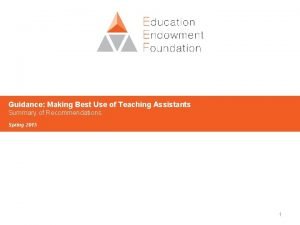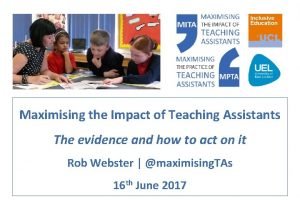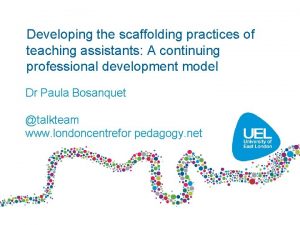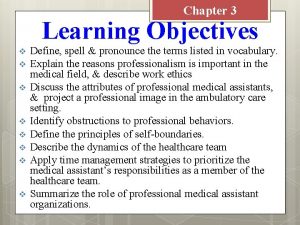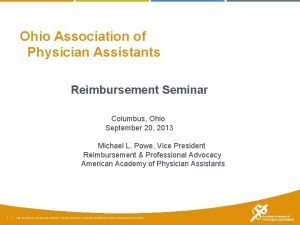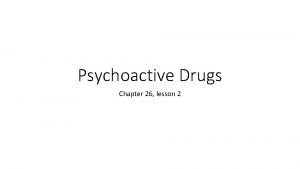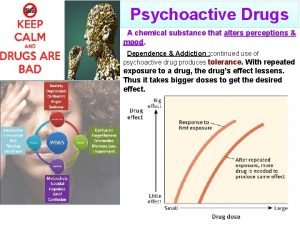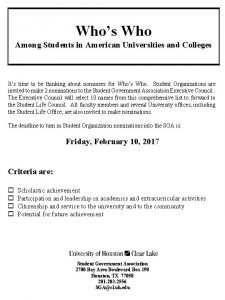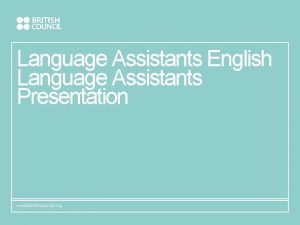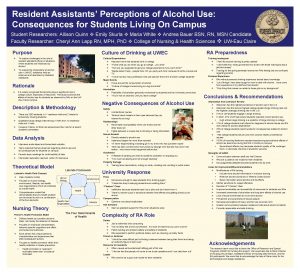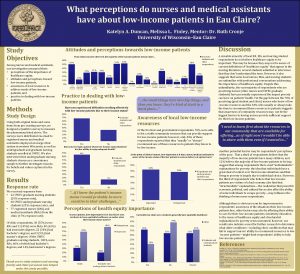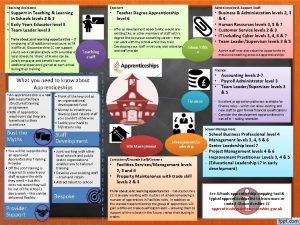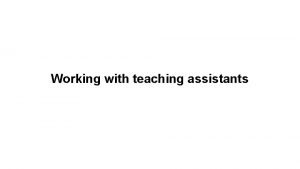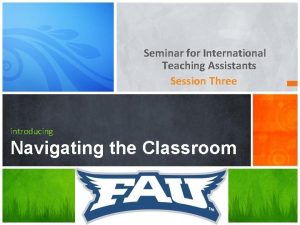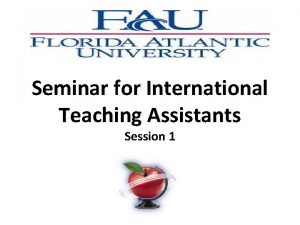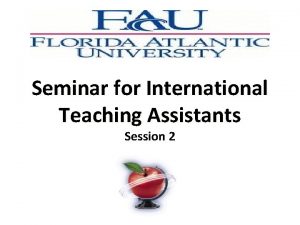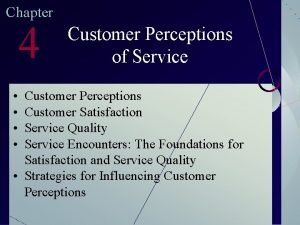American Students Perceptions of International Teaching Assistants Teaching











- Slides: 11

American Students’ Perceptions of International Teaching Assistants' Teaching Monica Mc. Crory, M. A. , Dr. Moon Cho, Dr. Kwangsu Cho School of Information Science & Learning Technologies University of Missouri, Columbia

Research Question What are American students’ perceptions of ITAs’ teaching effectiveness?

Have you ever had an instructor who… n n n didn’t smile or make eye-contact? lectured the entire period without the opportunity to ask questions? spoke fast without pausing and had flat, monotonous intonation?

Theoretical Gap n Previous studies focused on: n n n Communicative competence Cultural competence This study focused on: n n n Communicative competence Interpersonal competence Pedagogical competence

Theoretical Gap n Previous studies focused on a Theoretical or top-down approach n This study focuses on a Consumer-oriented or bottom-up approach

Methodology n n n Participants 12 STEM courses taught by 12 ITAs from India, China, Thailand, Middle East, Lebanon, Iran, and Mexico 136 undergraduates 80 participants’ data was used 5 females, 6 males, 1 unknown n n Online survey consisting of 17 items 15 items regarding our 3 constructs n n Interpersonal competence Communicative competence Pedagogical competence 5 -point scale

Findings Table 1. Factor Structure of the Epistemological Beliefs Items Factor loading Factor 1 Communicative Competence (Eigenvalue = 8. 81: α =. 91) 4. Listening and speaking skills are . 95 5. Response to student questions, comments, and opinions is . 81 3. Communication of subject matter, such as use of examples, illustrations, analogies, is . 72 2. Use of class time (e. g. , inclusion of opportunities for student participation) is . 56 Factor 2 Pedagogical Competence (Eigenvalue = 1. 67: α =. 88) 14. The lab instructor's explanations of the underlying rationale for techniques used and/or theory behind the process(es) are . 93 15. Pre-lab explanations by the laboratory instructor are . 89 13. The lab instructor's ability to provide adequate individual attention during the lab is . 64 Factor 3 Interpersonal Competence (Eigenvalue =. 94: α =. 72) 16. Opportunities for active student participation are . 79 9. Availability outside of class is . 67

Findings Table 2. Means, Standard Deviations, Intercorrelations for Teaching Effectiveness and Predictor Variables (N=80) M SD F 1 F 2 F 3 LC LP 3. 84 1. 09 . 86* . 57* . 73* . 43* -. 08 1. Communicative Competence 3. 94 . 98 -- . 56* . 67* . 41* -. 11 2. Pedagogical Competence 3. 84 1. 04 -- . 59* . 41* . 27* 3. Interpersonal Competence 4. 13 . 86 -- . 50* . 07 4. Language Comprehensibility 3. 27 . 87 -- -. 04 3. 13 . 66 Variable Teaching Effectiveness (TE) Predictor variable (LC) 5. Language Proficiency (LP) Note. * p <. 01 --

Findings Table 3. Simultaneous Multiple Regression Analysis Summary for F 1, F 2, F 3, and LC Predicting Teaching Effectiveness (N=71) Variable B SEB 1. Communicative Competence . 96 . 08 1. 03* 2. Pedagogical Competence . 72 . 08 . 74* 3. Interpersonal Competence . 85 . 08 . 93* 4. Language Comprehensibilty -. 07 . 09 -. 06 5. Language Proficiency (LP) . 02 . 12 -. 01 Constant 3. 95 . 47 Note. R 2 =. 76; F (5, 74) = 47. 12 ; p <. 001 *p <. 001. β

Discussion n n ITAs might benefit from training which includes communicative strategies such as listening and speaking, and responding to students’ questions, comments, and opinions. Future studies are recommended to examine the differences in US & ITA instructional roles and teaching styles.

Questions? mccrorym@missouri. edu
 Making best use of teaching assistants
Making best use of teaching assistants Maximising the impact of teaching assistants
Maximising the impact of teaching assistants Scaffolding framework for teaching assistants
Scaffolding framework for teaching assistants Obstructions to professionalism
Obstructions to professionalism Ohio association of physician assistants
Ohio association of physician assistants Drug that alters moods, thoughts, and sense perceptions
Drug that alters moods, thoughts, and sense perceptions Trust your perceptions
Trust your perceptions Drugs that alter moods thoughts and sense perceptions
Drugs that alter moods thoughts and sense perceptions Psychedelic drugs that distort perceptions and evoke
Psychedelic drugs that distort perceptions and evoke A chemical substance that alters perceptions and mood
A chemical substance that alters perceptions and mood Jose rizal first favorite novel
Jose rizal first favorite novel Who's who in american colleges and universities
Who's who in american colleges and universities
